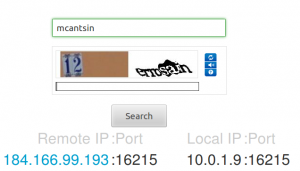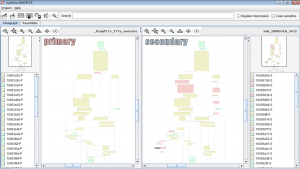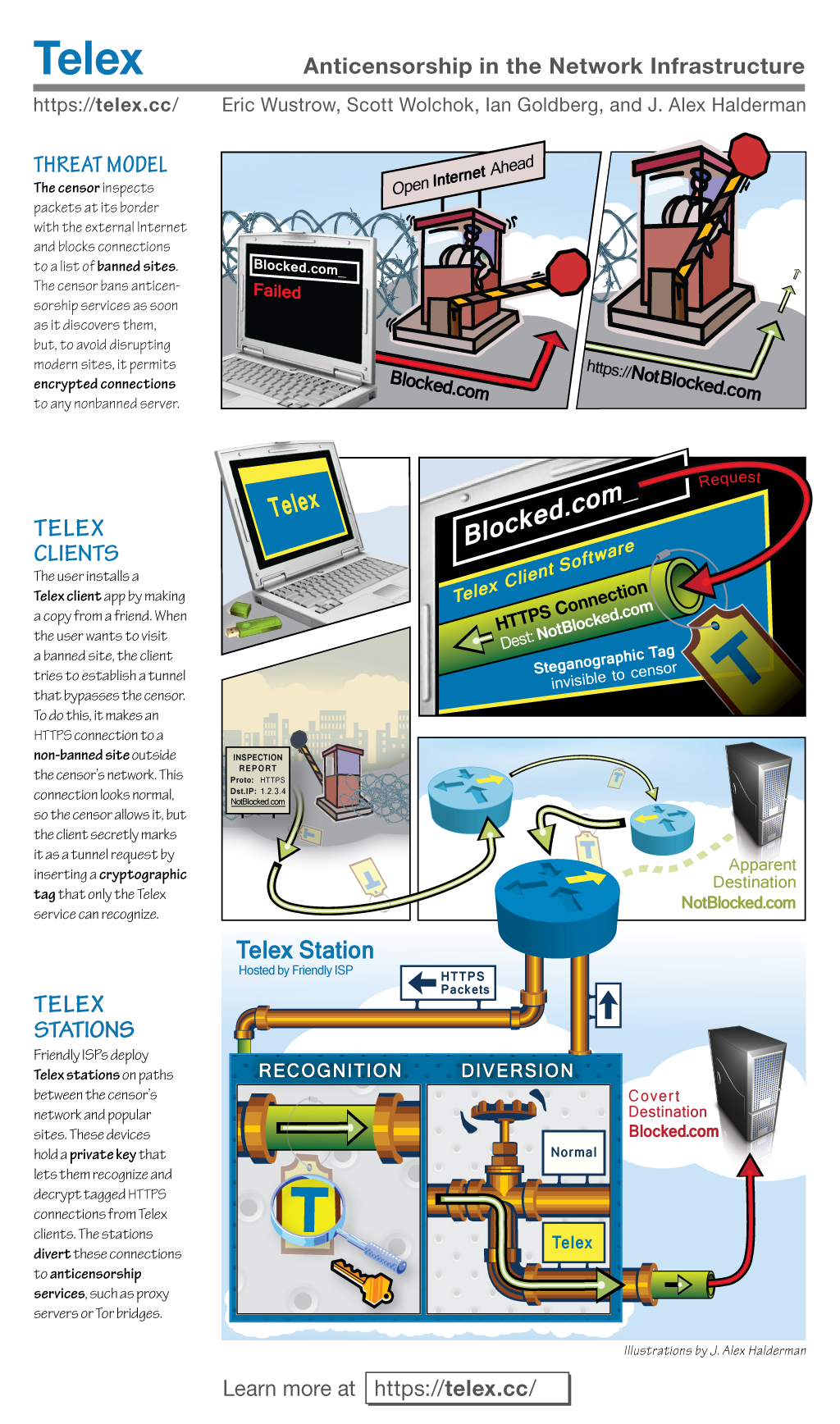Fernmeldeüberwachung: Technisches Konzept zur Datenübermittlung
Der Dienst Überwachung Post- und Fernmeldeverkehr (Dienst ÜPF) hat am
28.03.2012 ein Dokument mit technischen Angaben veröffentlicht, die
sicherstellen, dass die Fernmeldedienstanbieterinnen (FDA) ihre Daten dem
Dienst ÜPF übermitteln können. Der Dienst ÜPF fordert bei den FDA
solche Daten im Auftrag von Strafverfolgungsbehörden zur Aufklärung
schwerer Straftaten an.
Sehr geehrte Damen und Herren
Das so genannte Ausleitungskonzept, das am 28.03.2012 veröffentlicht
wurde, ergänzt die revidierte Verordnung über die Überwachung des Post-
und Fernmeldeverkehrs (VÜPF) und die technischen Richtlinien für die
Telekommunikationsüberwachung TR TS (Version 3.0). Der Dienst ÜPF hat das
Konzept in intensiver Zusammenarbeit mit den FDA erarbeitet. Es beschreibt
die allgemein gültigen Rahmenbedingungen und neue mögliche
Ausleitungsnetze in IP-Technologie. Gestützt auf das Ausleitungskonzept
schliesst der Dienst ÜPF mit jeder einzelnen FDA Anbindungsvereinbarungen
ab. Diese regeln alle technischen Einzelheiten, wie z.B. physikalische
Übergabepunkte, Netzadressen, Zuständigkeiten oder Kontaktstellen.
Das Ausleitungskonzept richtet sich ausschliesslich an FDA, die dem
Bundesgesetz betreffend die Überwachung des Post- und Fernmeldeverkehrs
(BÜPF) unterstellt sind. Das BÜPF verpflichtet die FDA, dem Dienst ÜPF
Daten aus Überwachungsmassnahmen zuzuleiten, die von Staatsanwaltschaften
zur Aufklärung schwerer Straftaten angeordnet und vom zuständigen
Zwangsmassnahmengericht genehmigt wurden.
Das Ausleitungskonzept ist zu finden auf: www.uepf.admin.ch
Zum Verfahren der Post- und Fernmeldeüberwachung
Zur Aufklärung schwerer Straftaten können die Schweizer
Strafverfolgungsbehörden, gestützt auf die Schweizerische
Strafprozessordnung (StPO; SR 312.0) Massnahmen zur Überwachung des Post-
und Fernmeldeverkehrs anordnen. Jede Überwachungsanordnung einer
Staatsanwaltschaft muss von der zuständigen richterlichen
Genehmigungsbehörde (Zwangsmassnahmengericht) der Kantone oder des Bundes
geprüft und genehmigt werden. Der Dienst ÜPF nimmt zuletzt eine formelle
Prüfung vor. Dabei prüft er, ob die anordnende Behörde tatsächlich
zuständig ist und ob sich die Überwachungsanordnung auf eine strafbare
Handlung gemäss Deliktkatalog (Art. 269 StPO) bezieht. Der Dienst ÜPF
weist die Fernmeldedienstanbieterinnen anschliessend an, die fraglichen
Daten dem Dienst ÜPF zu übermitteln. Er stellt die Daten dann den
auswertenden Strafverfolgungsbehörden zur Verfügung. Vom Inhalt der Daten
und der betreffenden Ermittlungen erhält der Dienst ÜPF keine Kenntnis.
Die Pflichten der Fernmeldedienstanbieterinnen
Wer eine Fernmeldedienstleistung erbringt, muss dies dem Bundesamt für
Kommunikation (BAKOM) melden. Auf der Website des Dienstes ÜPF finden Sie
den Link zu den entsprechenden Meldeformularen.
Jede FDA ist verpflichtet, Überwachungsaufträge gemäss den Richtlinien
und Verfügungen des Dienstes ÜPF auszuführen. Um Überwachungen
vornehmen zu können, muss jede FDA eine geeignete Anlage bereithalten.
Alle FDA müssen jederzeit in der Lage sein, Überwachungsmassnahmen
durchzuführen. Um die Überwachungsbereitschaft der FDA sicherzustellen,
führt der Dienst ÜPF bei diesen ein Compliance-Verfahren durch. Die FDA
sind gemäss VÜPF verpflichtet, dem Dienst ÜPF die Namen ihrer
Kontaktpersonen (Lawful Interception Officer bzw. LI Officer) zu nennen
(Art. 18 Abs. 3 und 26 Abs. 3 VÜPF). Alle noch nicht beim Dienst ÜPF
registrierten FDA sind verpflichtet, sich unverzüglich zu melden.
Für allfällige Fragen stehen wir Ihnen gerne zur Verfügung unter
folgendem Link: https://www.li.admin.ch/de/ptss/contact.html
Mit freundlichen Grüssen
Eidgenössisches Justiz- und Polizeidepartement EJPD
Informatik Service Center ISC-EJPD
Dienst Überwachung Post- und Fernmeldeverkehr
Jean-Louis Biberstein
Leiter Providermanagement
Surveillance des télécommunications : prescriptions techniques pour la
transmission des données
Le Service de surveillance de la correspondance par poste et
télécommunication (Service SCPT) a publié, le 28 mars 2012, un document
avec des prescriptions techniques pour garantir que les fournisseurs de
services de télécommunication puissent lui transmettre les renseignements
demandés. Sur mandat des autorités de poursuite pénale, le Service SCPT
demande en effet aux fournisseurs de services de télécommunication de lui
transmettre des données en vue d’élucider des infractions pénales
graves.
Mesdames, Messieurs,
Le schéma directeur réglant les modalités de la transmission de données
publié ce mercredi complète l’ordonnance révisée sur la surveillance
de la correspondance par poste et télécommunication (OSCPT) et les
directives techniques relatives à la surveillance des télécommunications
(Technical Requirements for Telecommunication Surveillance, TR TS, version
3.0). Fruit d’une collaboration intense avec les fournisseurs de services
de télécommunication, ce document définit les conditions cadres
généralement applicables et décrit de nouveaux réseaux de transmission
potentiels, fondés sur la technologie internet. C’est aussi sur la base
de ce schéma directeur que le Service SCPT conclut une convention de
raccordement avec chaque fournisseur de services de télécommunication
afin de régler tous les détails techniques, comme le point de
transmission physique, les adresses réseau, les attributions respectives
et les services et interlocuteurs compétents.
Ce schéma directeur s’adresse exclusivement aux fournisseurs de services
de télécommunication, lesquels sont tenus, conformément aux dispositions
de la loi fédérale sur la surveillance de la correspondance par poste et
télécommunication (LSCPT), de livrer au Service SCPT les données
recueillies en exécution de mesures de surveillance ordonnées par les
ministères publics pour élucider des crimes graves et autorisées par le
tribunal des mesures de contrainte compétent.
Le schéma directeur relatif à la transmission de données est disponible
sur le site www.scpt.admin.ch
Déroulement de la surveillance
Le code de procédure pénale suisse (CPP ; RS 312.0) permet aux autorités
de poursuite pénale d’ordonner des mesures de surveillance de la
correspondance par poste et télécommunication en vue d’élucider des
infractions graves. Tout ordre de surveillance édicté par un ministère
public doit être approuvé par l’instance judiciaire compétente
(tribunal des mesures de contrainte) au niveau cantonal ou fédéral. Avant
la mise en oeuvre proprement dite, le Service SCPT effectue encore un
dernier contrôle formel afin de s’assurer de la compétence de l’autorité
à l’origine de la mesure et de vérifier que la surveillance vise
effectivement la poursuite d’une infraction figurant dans la liste des
infractions pertinentes (cf. art. 269 CPP). Le Service SCPT ordonne alors
au fournisseur de services de télécommunication de lui faire parvenir les
informations demandées, avant de les transmettre à son tour aux
autorités de poursuite pénale chargées de les exploiter. Le service n’a
accès, à aucun moment, ni au contenu des données transmises, ni aux
détails des investigations.
Obligations des fournisseurs de services de télécommunication
Quiconque fournit un service de télécommunication doit l’annoncer à
l’Office fédéral de la communication (OFCOM). Toutes les informations
utiles et les formulaires établis à cet effet sont disponibles sur le
site internet du Service SCPT.
Les fournisseurs de services de télécommunication sont tenus d’exécuter
les mandats de surveillance selon les directives et les instructions du
Service SCPT. Ils doivent être en mesure de mettre en oeuvre, en tout
temps, des mesures de surveillance. Aussi chaque fournisseur doit-il
disposer, à cet effet, d’une infrastructure appropriée, prête à
fonctionner. Le service effectue des contrôles de conformité auprès des
fournisseurs afin de s’assurer qu’ils sont bien en mesure de procéder aux
surveillances ordonnées. Conformément aux dispositions de l’OSCPT (cf.
art. 18, al. 3, et art. 26, al. 3, OSCPT), les fournisseurs de services de
télécommunication ont l’obligation de communiquer au Service SCPT le nom
des collaborateurs compétents pour les questions en lien avec
l’interception légale des télécommunications (Lawful Interception
Officers ou LI Officers). S’ils ne l’ont pas encore fait, les fournisseurs
de services de télécommunication doivent s’annoncer sans délai au
service.
Nous demeurons à votre disposition pour d’éventuelles questions sous le
lien suivant : https://www.li.admin.ch/fr/ptss/contact.html
Nous vous prions de croire, Mesdames, Messieurs, à l’assurance de nos
sentiments distingués.
Département fédéral de justice et police DFJP
Centre de services informatiques CSI-DFJP
Service Surveillance de la correspondance par poste et télécommunication
Jean-Louis Biberstein
Chef Providermanagement
Sorveglianza delle telecomunicazioni: specifiche tecniche per la
trasmissione dei dati
Il 28 marzo 2012 il Servizio di sorveglianza della corrispondenza postale e
del traffico delle telecomunicazioni (Servizio SCPT) ha pubblicato un
documento contenente le specifiche tecniche che garantiscono la
trasmissione dei dati da parte dei fornitori di servizi di
telecomunicazione (fornitori). Il Servizio SCPT richiede tali dati su
incarico delle autorità inquirenti al fine di far luce su reati gravi.
Distinte signore, egregi signori,
Le specifiche di trasferimento pubblicate mercoledì vanno a integrare
l’ordinanza riveduta sulla sorveglianza della corrispondenza postale e
del traffico delle telecomunicazioni (OSCPT) e le direttive tecniche per la
sorveglianza delle telecomunicazioni TR TS (versione 3.0). Le specifiche,
messe a punto in stretta cooperazione con i fornitori, definiscono le
condizioni applicabili in termini generali e le nuove possibili reti di
trasferimento in tecnologia IP. Fondandosi su tali specifiche, il Servizio
SCPT firma, con ogni singolo fornitore, un accordo di allacciamento che
definisce tutti i particolari tecnici, quali i punti di consegna fisici,
gli indirizzi di rete, le competenze e le persone di riferimento.
Destinatari esclusivi delle specifiche di trasferimento sono i fornitori
soggetti alla legge federale sulla sorveglianza della corrispondenza
postale e del traffico delle telecomunicazioni (LSCPT), che impone loro di
trasmettere al Servizio SCPT i dati risultanti dalle misure di sorveglianza
disposte dai pubblici ministeri e confermati dal competente giudice dei
provvedimenti coercitivi per far luce su reati gravi.
Le specifiche sono consultabili all’indirizzo www.li.admin.ch/it
Procedura di sorveglianza
In virtù del Codice di procedura penale (CPP; RS 312.0), le autorità
inquirenti svizzere possono disporre misure di sorveglianza della
corrispondenza postale e del traffico delle telecomunicazioni al fine di
far luce su reati gravi. Ogni ordine di sorveglianza spiccato da un
pubblico ministero va esaminato nel merito e approvato dalla competente
autorità giudiziaria cantonale o federale (giudice dei provvedimenti
coercitivi). Il Servizio SCPT procede infine a un esame formale
controllando se l’autorità disponente è effettivamente competente e se
la sorveglianza ordinata è connessa a un reato figurante nell’elenco
dell’articolo 269 CPP. Il Servizio SCPT ordina quindi ai fornitori di
trasmettergli i dati richiesti, consegnandoli a sua volta alle autorità
inquirenti incaricate di trattarli. Il Servizio SCPT non viene a conoscenza
né del contenuto dei dati trasmessi né dei dettagli investigativi.
Obblighi dei fornitori
Chi fornisce un servizio di telecomunicazione deve annunciarlo
all’Ufficio federale delle comunicazioni (UFCOM). Il link ai moduli di
notifica figura sul sito del Servizio SCPT.
Ogni fornitore è tenuto a compiere i mandati di sorveglianza seguendo le
direttive e le decisioni del Servizio SCPT. A tal fine deve dotarsi di
un’infrastruttura adeguata allo scopo ed essere pronto a procedere alla
sorveglianza in ogni momento. Il Servizio SCPT sottopone ogni fornitore a
controlli di conformità per assicurarsi che sia effettivamente in grado di
garantire la sorveglianza disposta. L’OSCPT (art. 18 cpv. 3 e 26 cpv. 3)
impone ai fornitori di comunicare al Servizio SCPT i nominativi delle
persone di riferimento (lawful interception officer o LI officer). Tutti i
fornitori non ancora registrati presso il Servizio SCPT sono tenuti a farlo
senza indugio.
Per ulteriori informazioni rimaniamo volentieri a vostra disposizione
all’indirizzo seguente: https://www.li.admin.ch/it/ptss/contact.html
Distinti saluti,
Dipartimento federale di giustizia e polizia DFGP
Centro servizi informatici CSI-DFGP
Servizio Sorveglianza della corrispondenza postale e del traffico delle
telecomunicazioni
Jean-Louis Biberstein
Capo Providermanagement








